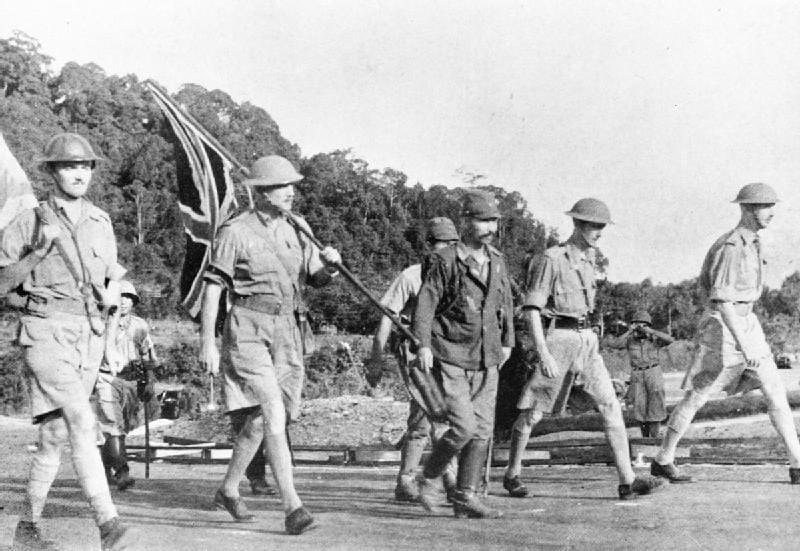Far East Campaign
Many people know relatively little about the war in the Far East, not least because of the emphasis given to celebrating the end of the war in Europe on VE Day, some 5 months before the end of WW2.
The creation of a ‘Greater East Asia Co-Prosperity Sphere’ was the ultimate strategic goal of Imperial Japan during the 1930s.
Ostensibly, Japan’s objective was to ensure its own regional economic self-sufficiency, as well as that of Japanese-occupied Korea, China and Manchukuo. However, the bitter reality was that Japan’s militarist government was using the false narrative of Asian ‘liberation’ as a cynical cover for the establishment of Japanese regional hegemony, thereby replacing the Western powers.
It was in pursuit of this lie that Japanese forces attacked the north-eastern coast of what was then Malaya, at Kota Bharu, at 0045 hours on 8 December 1941 (some 40 minutes earlier than the assault on the US Naval base at Pearl Harbor).
Despite courageous resistance at places such as Jitra and Kampar, British and Commonwealth forces were ultimately compelled to withdraw to the extreme south of the Malayan peninsula, in order to protect Singapore.
Regrettably, however, the island colony was eventually also forced to capitulate due to a perfect storm of poor intelligence, dwindling supplies of fresh water, and a lack of effective air cover.

Churchill called the fall of Singapore, ‘The worst disaster and largest capitulation in British history’.
The perceived disgrace of such a bitter surrender left a scar upon him. Indeed, he was so troubled by it that, many months later, he was heard to observe that he, "cannot get over Singapore."
We are all too aware of VE Day in May - a day which marked the end of WW2 in Europe but sadly, for many, this did not mark the end of the war for many FEPOWs and their families.